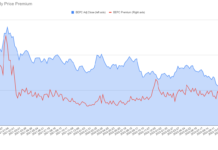Last Thursday, I reviewed two chapters from the recently published book “Investment Opportunities for a Low Carbon World“*. This post reviews two more.
Geothermal Energy
Alexander Richter, Glitnir Bank (now Íslandsbanki)
Geothermal is one of the most interesting forms of clean power generation there is. As noted by the author, the most convincing argument for geothermal electricity is the fact that it operates at capacity factors in the upper 90s. This makes it the only renewable technology suitable for baseload power with the exception of dam-based (i.e. large-scale) hydro.
However, as the chapter demonstrates, global potential is unevenly distributed, with Asia, North America and Latin America having around three to four times more potential than Europe, Africa and Oceania. Besides a brief review of the global picture, the book focuses largely on the US, which will most likely remain the most active market for a few more years (the US currently accounts for a third of global installed geothermal electric capacity).
The author does a good job of breaking the geothermal development business model into its main phases (exploration, pre-feasibility, feasibility and design & construction) and explaining the various types of capital flows required at each stage, as companies move from a mining exploration business model (exploration, pre-feasibility, feasibility) to a power generation utility model (design & construction). What’s missing, however, is a discussion of the probability of project success at each stage, with risk typically culminating in the feasibility phase with important sums of cash being spent on exploration drilling with no guarantee that the resource will materialize.
The chapter’s strength is undeniably its assessment of the current state of the US market. The author uses data from a number of different sources to show the future potential of the market. California is expected to lead the way with Nevada coming in second. Based on a database of where the overall pipeline of US projects was at at the end of 2008, the author estimates that several projects will reach the feasibility and design & construction phases in 2011 and 2012, which should lead to greater demand for capital by the industry.
The chapter also touches on direct use geothermal, although the discussion is far less detailed than that on geothermal electricity. This despite the fact that the author writes: “[t]he biggest potential and prospects for the shorter term are in the direct use of geothermal energy, particularly for heating and other applications that use heat directly.”
As with the first two chapters I reviewed, I would have liked a few stock picks, and I believe a sub-section on opportunities in the equipment sector might have been interesting. However, this chapter fulfilled its purpose well; it provided a good introduction to the sector and can serve as reference material for later on. The US data was also very useful.
Energy Efficiency as an Investment Theme
Zoë Knight, Cheviot Asset Management
Energy efficiency is the most straightforward way of cleaning up our electricity supply and, given the right incentives, could also be the cheapest one (up to a point, as efficiency investments eventually run into diminishing marginal returns). We learn that in 16 IEA countries with strong efficiency profiles, efficiency measures resulted in aggregate savings worth US$180 billion in 2005 – not bad!
Incentives is thus exactly what a large part of this chapter focuses on. The author provides a thorough review of European policies and US efficiency targets outlined by the Obama administration to date. In both cases, it appears evident now that a trend toward greater energy efficiency incentives and regulations is well underway.
The author also provides a breakdown of global fuel consumption by category and identifies sectoral investment opportunities that could arise in each category. On the manufacturing side, the greatest opportunities are in machine drives (refrigeration, fans, pumps, compressors and materials processing). For households, hot water and central heating are key areas.
However, as with other chapters I’ve reviewed so far, there are no specific stock picks. I did learn, however, that Merrill Lynch created an energy efficiency equity index. However, because all substantive info on the index seems to be accessible only to clients, this won’t help retail investors much.
I found the review of US and EU policies very useful, but would have appreciated a greater focus on some of the main technologies that are currently commercially available (with the exception of LED lighting which is well covered), as well as some stock picks.
The author makes the following useful point about large companies with exposure to efficiency (most of the opportunities currently available to investors in this area are large conglomerates): “investors need to identify whether the theme is a large enough driver to warrant stock selection or whether there may be other factors that will drive valuation of the stock […], outweighing the positive structural drivers from increased investment at a government level into energy efficiency. As with any equity investment, positive long-term structural drivers may differ from short-term trading cyclicality.”
DISCLOSURE: None
* We are always interested in reviewing books and reports in the areas of alternative energy, cleantech or other environmental industries, especially where they add value to the investment decision-making process. If your organization would like a new book or report reviewed, please contact us.








